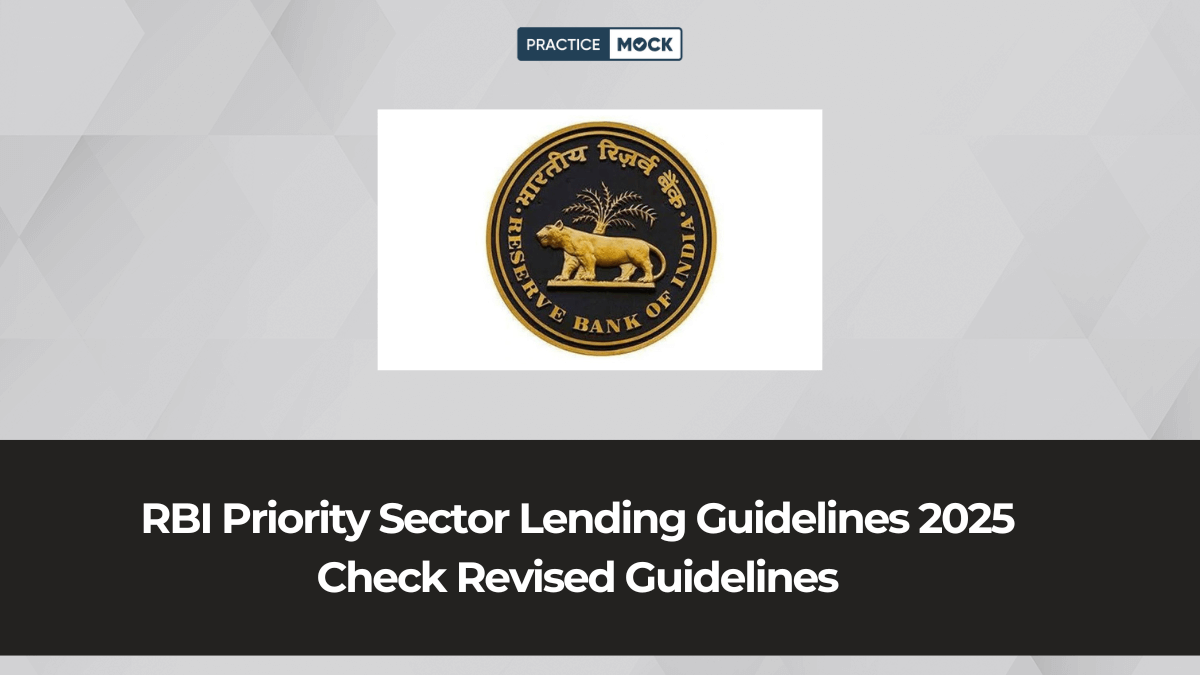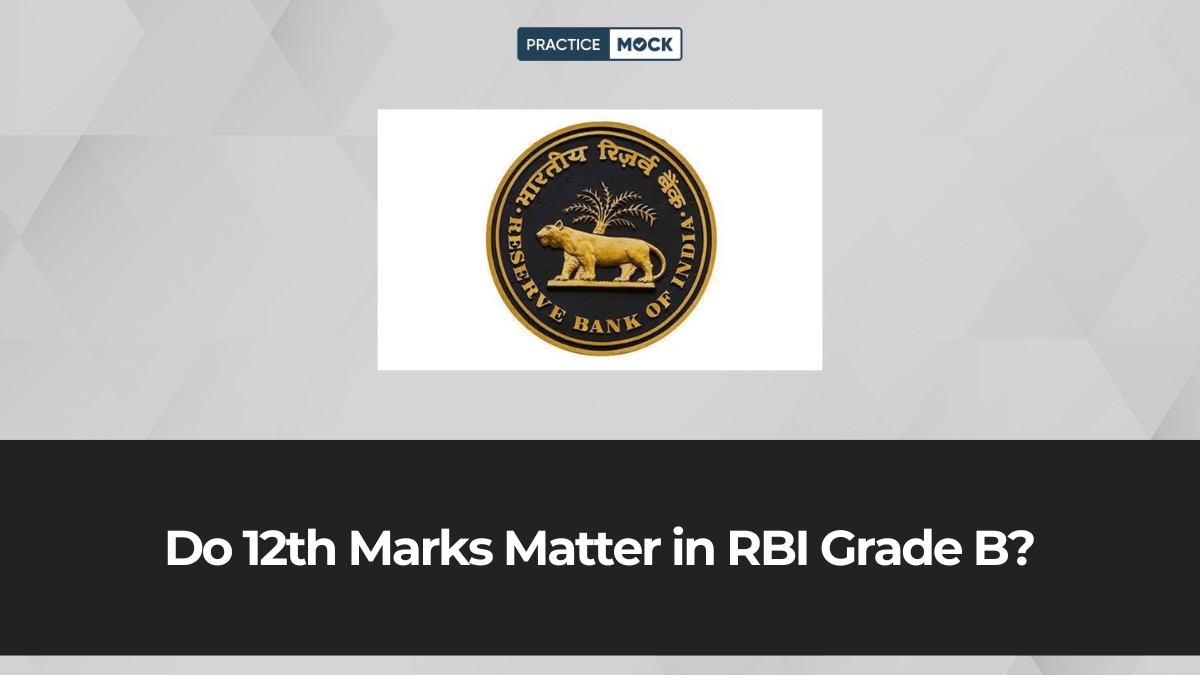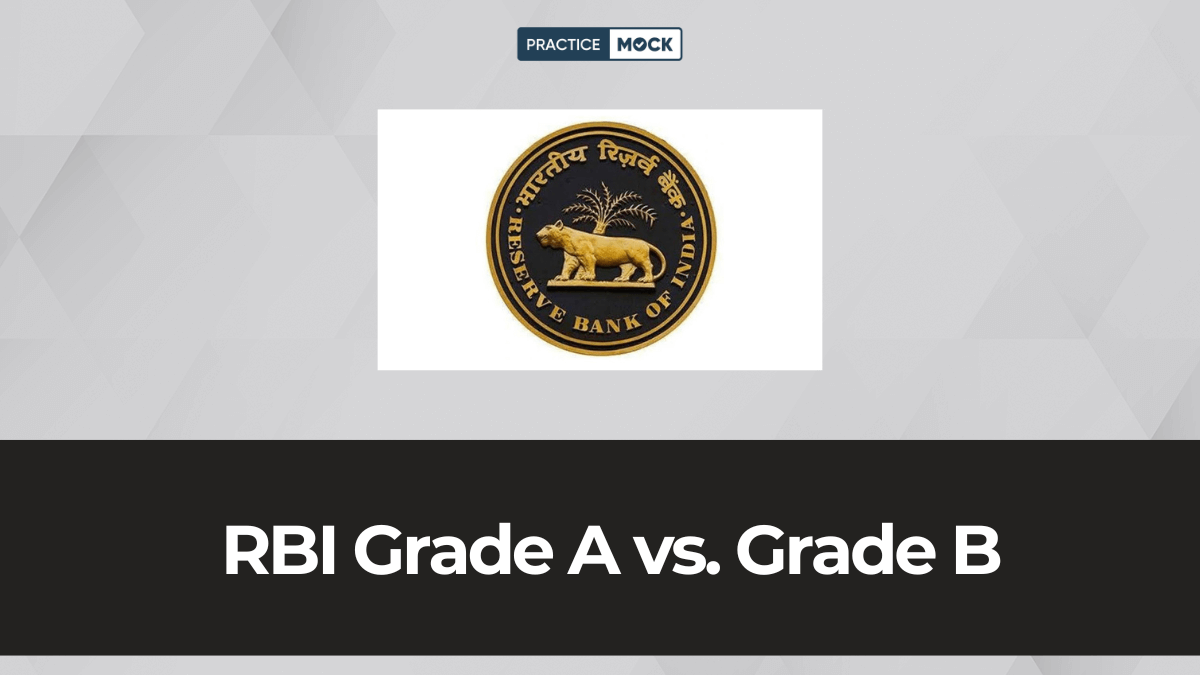RBI Priority Sector Lending Guidelines 2025, Check PSL Revised Rules


The Reserve Bank of India (RBI) has made new changes to its Priority Sector Lending (PSL) rules, which started this year, from 1st April 2025. These changes aim to make sure that important sectors like agriculture, small businesses, and clean energy get more loans. This helps in the growth of the country and supports people who need financial help the most. This topic is very important for RBI Grade B aspirants. Questions related to PSL may appear in Phase 1 as well as the Phase 2 exam. Understanding these new rules will help you score better and feel more confident during the exam.
Revised RBI Priority Sector Lending Guidelines 2025: Important Changes
The revised PSL guidelines, effective from April 2025, introduce multiple changes. It includes higher loan limits, increased reach, and specific targets for different sectors. Let’s take a closer look at important revisions:
1. Higher Loan Limits for Housing and Renewable Energy
RBI has increased loan limits. It has done so for housing and renewable energy (under the PSL framework).
- Bigger home loans for urban and rural areas.
- Higher limits support affordable housing.
- Clean energy (Solar and wind projects now included).
- Boosts green energy investment.
- Promotes clean energy and housing.
2. Revised Targets for Urban Cooperative Banks (UCBs)
The PSL targets for Urban Cooperative Banks (UCBs) have been updated as well.
- UCBs must now give 60% of ANBC or CEOBSE to priority sectors.
- This rule applies to whichever value is higher.
- It ensures better support for agriculture.
- MSMEs in urban areas will benefit more.
- Education funding from UCBs will also rise.
3. More People Count as Weaker Sections
The RBI has updated the definition of weaker sections.
- More groups, including women, are now covered.
- Loan cap for women under UCBs is removed.
- Improved credit availability for women
- Supports women entrepreneurs and others.
- Promotes financial inclusion for all.
4. Differential Weightage System for Regional Credit Disparities
RBI has introduced a differential weightage system to improve the distribution of loans in different regions.
- Low-credit districts get 125% weightage.
- High-credit districts get only 90%.
- Attention turns to underserved regions (marginalized communities)
- Intends to balance credit distribution.
- Supports financial development in underfunded areas.
RBI Priority Sector Lending Guidelines, Revised Sectoral Focus
The RBI has redefined the focus of PSL funds, broadening the scope of sectors eligible for financing. These include:
- Agriculture: Loans for farmers, agri-infrastructure, and allied activities.
- Micro, Small, and Medium Enterprises (MSMEs): Financing for small businesses and start-ups.
- Export Credit: Financing to boost India’s trade sector.
- Education: Loans for students pursuing higher education and vocational courses.
- Housing: Home loans, slum rehabilitation projects, and infrastructure development.
- Social Infrastructure: Credit for schools, hospitals, and sanitation projects.
- Renewable Energy: Funding for solar, wind, and other clean energy projects.
These changes will play an important role in enhancing the financial sector’s contribution to national development priorities.
Click Here to Check PIB Sutra & Master Current Affairs
How the New RBI PSL Guidelines 2025 Affect Different Types of Banks
Different types of financial institutions will have varying PSL targets based on their nature and scale of operations. Understanding these targets is crucial for aspirants preparing for the RBI Grade B exam. Let’s break them down:
1. Domestic Commercial Banks (DCBs)
Domestic commercial banks are required to allocate 40% of their Adjusted Net Bank Credit (ANBC) or Credit Equivalent of Off-Balance Sheet Exposures (CEOBSE) towards PSL. This target is designed to ensure that commercial banks contribute significantly to essential sectors such as agriculture, MSMEs, and renewable energy.
2. Regional Rural Banks (RRBs) and Small Finance Banks (SFBs)
RRBs and SFBs have a higher PSL target of 75%. This target ensures that these banks, which primarily serve rural areas and small-scale enterprises, continue to support the financial needs of underdeveloped regions and promote rural development.
3. Urban Cooperative Banks (UCBs)
UCBs have a revised PSL target of 60% of their ANBC or CEOBSE, whichever is higher. This revised target ensures that UCBs play an active role in financing priority sectors in urban areas, which are often neglected by larger commercial banks.
4. What Happens if Banks Miss Their PSL Targets?
If banks fail to meet their PSL targets, they must contribute to the Rural Infrastructure Development Fund (RIDF) and other designated funds at predetermined interest rates. This mechanism ensures that even when banks fall short of their targets, funds are still directed to priority sectors. The penalty system also serves as an incentive for financial institutions to comply with their PSL obligations.
Tips to Master RBI PSL Guidelines Quickly
Here are the tips that you need to follow to answer questions related to the PSL guidelines:
1. Understand the main changes
Focus on significant updates such as higher loan limits for housing and renewable energy.
- Note the increased loan limits for housing.
- Focus on renewable energy funding, including solar and wind projects.
- Learn about changes in weaker sections criteria, especially for women entrepreneurs.
- Study the revised PSL target for Urban Cooperative Banks.
- Understand the differential weight system for regional credit disparities.
2. Break down the PSL sectors
Know the different sectors covered under PSL to understand where the funds are directed.
- Agriculture, MSMEs, and education sectors are key.
- Renewable energy funding is a growing priority.
- Housing and social infrastructure are also important.
- Understand the regional credit allocation for rural areas.
- Focus on the export credit targets for boosting trade.
3. Keep track of target percentages
Each category of bank has different PSL targets. Focus on these targets.
- Domestic commercial banks need 40% PSL.
- RRBs and SFBs must allocate 75%.
- Understand the target allocation for Urban Cooperative Banks.
- Learn how PSL targets differ based on financial institutions.
- Study the penalties for non-compliance.
4. Practice with sample questions
Familiarize yourself with questions related to PSL.
- Solve questions on revised targets and funding areas.
- Practice questions on the new weaker sections definition.
- Work on regional credit weightage-related queries.
- Focus on penalty-related questions for non-compliance.
- Revise past year’s PSL-related questions from RBI exams.
Also, know why RBI Grade B Phase 1 Exam: The Silent Eliminator of 99% Aspirants & What is the Finance and Management Syllabus for RBI Grade B Exam?
Join our unique Telegram group immediately to skyrocket your preparation for Regulatory exams via expert guidance, top tips, perfect feedback, and much more!
[ Click Here to join the PracticeMock Telegram Group! ]
[ Click Here to join the PracticeMock Telegram Discussion Group Link! ]
Related Blogs:
RBI Priority Sector Lending Guidelines: FAQs
PSL directs credit to essential sectors like agriculture, MSMEs, and renewable energy.
Commercial banks must allocate 40% of their credit towards PSL.
It gives higher weight to regions with lower credit flow to ensure balanced distribution.
Yes, banks must contribute to the Rural Infrastructure Development Fund if they fail to meet targets.
They aim to improve access to credit for weaker sections and underserved regions.
Recent Posts
SBI PO Mains Exam Analysis 2025, 5th May, Check Difficulty Level & Good Attempts
Here we are providing the SBI PO Mains Exam Analysis 2025, 5th May 2025. Candidates…
IBPS RRB Exam Date 2025 Out, Check PO & Clerk Prelims & Mains Exam Events
The IBPS RRB Exam Date 2025 has been released on the official website. Candidates can…
IBPS RRB Notification 2025, PO & Clerk Exam Date Out, Check Upcoming Events
The IBPS RRB Notification 2025 is expected to be released in June 2025. Candidates can…
Do 12th Marks Matter in RBI Grade B?
Do your 12th marks affect RBI Grade B chances? Discover the truth, eligibility details, and…
Attempt Latest Free SSC CGL Practice Quiz 2025
In this blog, we have provided the direct links to the latest free SSC CGL…
SBI to Hire 18,000 Employees in FY 2026, Biggest Recruitment Drive Soon
Here we are providing detailed information for SBI to Hire 18,000 Employees in FY26. Candidates…



